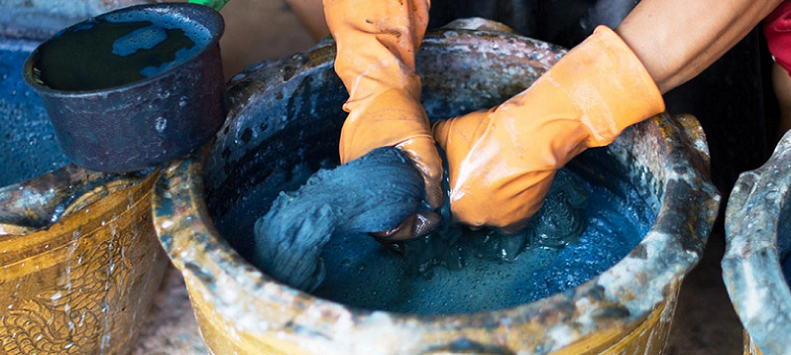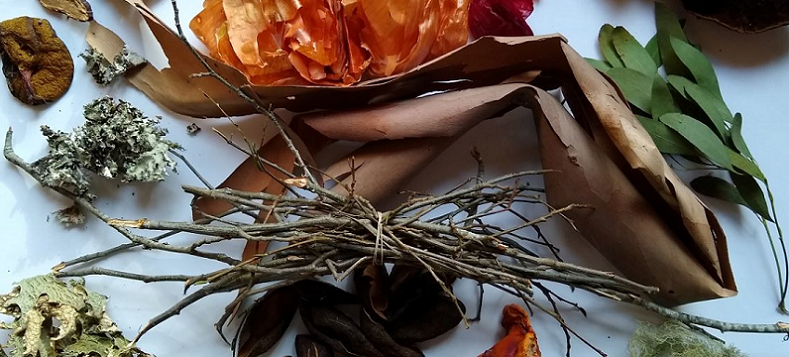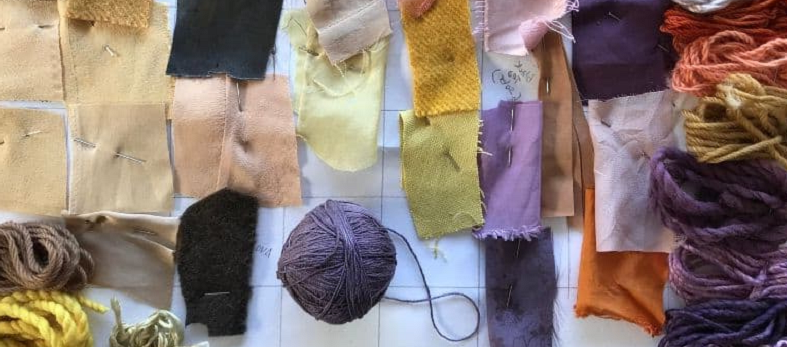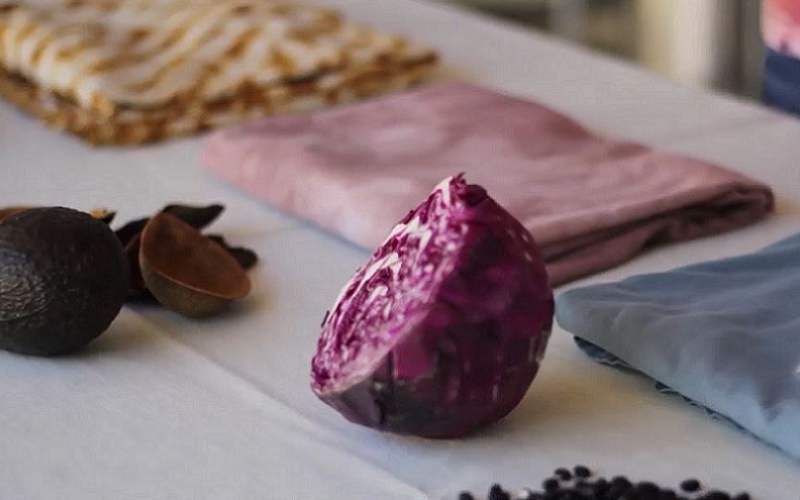Natural dyeing is an ancient practice that has recently gained popularity as people seek more sustainable and environmentally-friendly methods of creating beautiful fabrics. By using plants and food waste as sources of natural dyes, it is possible to achieve a wide range of colors on fabric without the harmful chemicals used in synthetic dyes.
What Is Natural Dyeing?
Natural dyeing is a process of using natural materials to dye fabrics, rather than using synthetic or chemical dyes. It is an ancient practice that has been used for thousands of years. The natural materials used for dyeing include plant matter such as roots, leaves, flowers, and bark, as well as food waste like onion skins and avocado pits.
These natural materials are boiled in water to extract the color, and the fabric is then soaked in the resulting dye bath. The color obtained from natural dyes tends to be more muted and earthy than that of synthetic dyes, but it has a unique beauty and charm.
Natural dyeing is becoming increasingly popular as people seek more sustainable and environmentally-friendly methods of creating beautiful fabrics. It also has the added benefit of being non-toxic and safe for the environment, as opposed to synthetic dyes which can be harmful to both humans and the ecosystem.

Plants Commonly Used for Natural Dyeing
There are many plants commonly used for natural dyeing, each with its unique color and properties. One of the most popular plants for dyeing is madder root, which produces shades of red, orange, and pink.
Indigo is another commonly used plant, producing shades of blue and green. Turmeric, a spice commonly used in cooking, can be used to produce bright yellow hues. Onion skins, another kitchen waste product, can create warm shades of orange and brown. Avocado pits and skins can produce shades of pink and peach.
Other plants that can be used for dyeing include chamomile, marigold, and walnut. Each of these plants requires different preparation methods and produces different colors depending on the fabric and dyeing process used.
Experimenting with different plants and techniques can yield endless possibilities for unique and beautiful colors on fabrics.
Food Waste as Natural Dyes
Food waste can be an unexpected but excellent source of natural dyes. Instead of throwing away vegetable scraps and fruit peels, they can be repurposed to create beautiful colors on fabric. Some common food waste products used for natural dyeing include onion skins, avocado pits and skins, pomegranate rinds, and tea leaves.
The dyeing process for food waste is similar to that of using plant matter, as the scraps are boiled in water to extract the color, and the fabric is then soaked in the dye bath. Not only does using food waste for natural dyeing help to reduce waste, but it also produces unique and unexpected colors.
For example, avocado pits and skins can create shades of pink and peach, while onion skins produce warm oranges and browns. Each food waste product requires different preparation methods and may produce different colors depending on the fabric and dyeing process used. Using food waste as natural dyes is an excellent way to combine sustainability and creativity.

Fabric Preparation for Natural Dyeing
Preparing the fabric for natural dyeing is an essential step in the process to ensure that the dye adheres properly and creates a lasting color. Different fabrics can require different preparation methods, but in general, they should be washed and scoured to remove any dirt, oil, or other substances that may interfere with the dyeing process.
Scouring involves boiling the fabric in a solution of water and a natural soap, such as grated olive oil or coconut oil soap. The fabric should then be rinsed thoroughly and mordanted. Mordanting is the process of treating the fabric with a substance that helps the dye adhere to the fibers and creates a more vibrant color.
Common mordants used in natural dyeing include alum, iron, and tannin. The fabric should be soaked in the mordant solution before being added to the dye bath. The amount of mordant used can affect the final color, so it is important to follow a recipe or experiment to find the desired shade.
By properly preparing the fabric for natural dyeing, you can ensure that the color is long-lasting and beautiful.

Dyeing Process
The dyeing process for natural dyes can vary depending on the type of material being used and the desired outcome. To create a dye bath, the natural materials, such as plant matter or food waste, are boiled in water for a certain amount of time to extract the color.
The fabric is then added to the dye bath and simmered for a set amount of time to achieve the desired color. The length of time that the fabric is soaked in the dye bath can affect the intensity of the color. Some natural dyes, such as indigo, require additional steps, such as oxidation, to achieve the desired color.
The fabric can be manipulated in the dye bath using different techniques, such as tie-dyeing or shibori, to create unique patterns and designs. Achieving different shades and tones can be done by using different amounts of natural material, altering the pH of the dye bath, or adding different mordants.
Once the desired color has been achieved, the fabric should be rinsed thoroughly with cool water until the water runs clear. Proper washing and care after dyeing can help ensure that the color remains vibrant and long-lasting.
Aftercare for Naturally Dyed Fabric
After dyeing the fabric with natural dyes, it is important to take proper care of the material to ensure that the color lasts as long as possible. The first step is to wash the fabric with cool water and a gentle soap to remove any excess dye or mordant. Avoid using hot water or harsh detergents as this can cause the color to fade.
It is also important to avoid wringing or twisting the fabric, as this can cause damage to the fibers. Instead, gently squeeze out any excess water and lay the fabric flat to dry. Direct sunlight can cause the color to fade, so it is best to dry the fabric in a shaded area. Once the fabric is dry, it is important to store it properly to prevent any damage or color fading.
Keep the fabric in a cool, dry place away from direct sunlight, and avoid folding or storing the fabric for extended periods of time. Natural dyes may fade over time, but with proper care, the color can last for many years.
By taking good care of your naturally dyed fabrics, you can ensure that they remain beautiful and vibrant for as long as possible.

